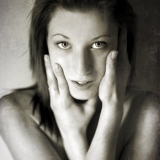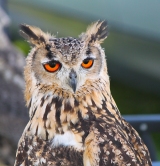Some more Fall photos
-
 Topic Author
Topic Author
- butterflygirl921
- Master of the Lens
-
- Canon Rebel EOS T1i 500D Canon 60D
- Followers: 160
- Posts: 1553
-
Points:
0
-
 Topic Author
Topic Author
- butterflygirl921
- Master of the Lens
-
- Canon Rebel EOS T1i 500D Canon 60D
- Followers: 160
- Posts: 1553
-
Points:
0
Post #256881
-

- Rob pix4u2
- Photo Guru
- Nikon N90s & FE film & D90 and D90 digital bodies
- Followers: 196
- Posts: 4204
-
Points:
30
Post #256887
Remember to engage brain before putting mouth in gear
Rob Huelsman Sr.
My Facebook www.facebook.com/ImaginACTIONPhotography
-
 Topic Author
Topic Author
- butterflygirl921
- Master of the Lens
-
- Canon Rebel EOS T1i 500D Canon 60D
- Followers: 160
- Posts: 1553
-
Points:
0
Post #256896
www.facebook.com/ButterflyImaging
-

- Patrick Harkness
- Lone Wolf
-
- Nikon D7000
- Followers: 5
- Posts: 121
-
Points:
0
-

- Leilanee
- Photography Hooked
-
- Canon EOS 6D
- Followers: 96
- Posts: 783
-
Points:
634
Post #256955
The second and fifth photo are well executed in composition, but seem less captivating because of the deep depth of field... A more shallow depth of field, keeping your focus on the tractor (or in the case of the other photo, the nearest branch) would make them seem less bland.
I LOVE the gradient of colours on the leaves in the 6th photo - nicely captured!
-

- Squibble
- The Lounger
-
- Canon eos 500d
- Followers: 38
- Posts: 1337
-
Points:
0
-

- Rob pix4u2
- Photo Guru
- Nikon N90s & FE film & D90 and D90 digital bodies
- Followers: 196
- Posts: 4204
-
Points:
30
Post #256970
Remember to engage brain before putting mouth in gear
Rob Huelsman Sr.
My Facebook www.facebook.com/ImaginACTIONPhotography
-
 Topic Author
Topic Author
- butterflygirl921
- Master of the Lens
-
- Canon Rebel EOS T1i 500D Canon 60D
- Followers: 160
- Posts: 1553
-
Points:
0
Post #257007
And rob yes i saw that thank you so much! i appreciate the like!
-

- rmeyer7
- Master of the Lens
-
- Canon 6D, Canon 5D mk. ii, Canon 50D
- Followers: 105
- Posts: 1640
-
Points:
2086
Post #257042
I think there are a few suggestions that could make these even better. The depth of field was already mentioned. Another thing I might try with the tractor shot is a lower perspective. Not that you should only shoot it from a lower perspective or that the one you shot doesn't look good -- it does! But I think it's a cool subject that should be captured from a lot of different angles.
On #6, the background is distracting. If you can get rid of the buildings, but keep the grass and fence, this shot might become the best of the set.
And one other suggestion (just my opinion) - don't be afraid to bump up the saturation just a little with shots like these. Fall photos are all about showcasing great colors, so helping them shine through a bit more might work well.
OK I lied...I have one more!
Depending on what you use for your post processing, try experimenting with different methods for enhancing details. Lightroom's Clarity adjustment can be useful, and using clarity and sharpening with adjustment brushes can make it even more flexible. If you use Photoshop, I highly recommend investing in Topaz Adjust. And also using the high pass filter is a great way to enhance details -- I'd be happy to share the way that I use that if you'd like to try it out.
-

- rmeyer7
- Master of the Lens
-
- Canon 6D, Canon 5D mk. ii, Canon 50D
- Followers: 105
- Posts: 1640
-
Points:
2086
-
 Topic Author
Topic Author
- butterflygirl921
- Master of the Lens
-
- Canon Rebel EOS T1i 500D Canon 60D
- Followers: 160
- Posts: 1553
-
Points:
0
Post #257049
-

- rmeyer7
- Master of the Lens
-
- Canon 6D, Canon 5D mk. ii, Canon 50D
- Followers: 105
- Posts: 1640
-
Points:
2086
Post #257057
Here's the way I use it -- others might have different ways that would be helpful or better, but this works well for me. (Note: this is the very last step in my editing process, I do everything else first.) Then, I follow this process:
- SAVE AS and give it a new filename IF you have several layers that you want to still be able to edit later
- Flatten the image
- Make a copy of the new flattened layer
- On the copy, go to Filters > Other > High Pass and set the radius to somewhere between 2-10 pixels -- this all depends on the size of the image, usually larger images mean larger radius
- Change the blending mode on the layer - usually I use hard light, but some people prefer soft light or overlay
- Adjust the layer opacity so the effect isn't too extreme. I usually find somewhere between 20-30% looks best, especially with hard light as the blending mode. I recommend you zoom in when adjusting this so you can see what it's really looking like!
-

- garyrhook
- Oh Wise One
-
- Nikon D850, Nikon D750, Panasonic G7K
- Followers: 912
- Posts: 11103
-
Points:
67681
Post #257230
OK, wow, I learned something new today. That's just awesome, and explains a lot. What else you got?rmeyer7 wrote:
- SAVE AS and give it a new filename IF you have several layers that you want to still be able to edit later
- Flatten the image
- Make a copy of the new flattened layer
- On the copy, go to Filters > Other > High Pass and set the radius to somewhere between 2-10 pixels -- this all depends on the size of the image, usually larger images mean larger radius
- Change the blending mode on the layer - usually I use hard light, but some people prefer soft light or overlay
- Adjust the layer opacity so the effect isn't too extreme. I usually find somewhere between 20-30% looks best, especially with hard light as the blending mode. I recommend you zoom in when adjusting this so you can see what it's really looking like!
-

- Scotty
- Agent 007
- James Bond, PT mod.
- Followers: 1088
- Posts: 9888
-
Points:
15096
Post #257258
rmeyer7 wrote: High pass filter is used in PS. (Probably some other editors as well.)
Here's the way I use it -- others might have different ways that would be helpful or better, but this works well for me. (Note: this is the very last step in my editing process, I do everything else first.) Then, I follow this process:
- SAVE AS and give it a new filename IF you have several layers that you want to still be able to edit later
- Flatten the image
- Make a copy of the new flattened layer
- On the copy, go to Filters > Other > High Pass and set the radius to somewhere between 2-10 pixels -- this all depends on the size of the image, usually larger images mean larger radius
- Change the blending mode on the layer - usually I use hard light, but some people prefer soft light or overlay
- Adjust the layer opacity so the effect isn't too extreme. I usually find somewhere between 20-30% looks best, especially with hard light as the blending mode. I recommend you zoom in when adjusting this so you can see what it's really looking like!
why would u flatten any layers opposed to duping the layer?
When the last candle has been blown out
and the last glass of champagne has been drunk
All that you are left with are the memories and the images-David Cooke.
Latest Reviews
The Olympus Pen E-P7 is an affordable micro four thirds mirrorless camera with 4K video capabilities, a 20.3MP sensor, and 121 focus points, making it a solid entry-level camera for beginners.
The Panasonic G9 II is a 25.2-megapixel micro four thirds camera with numerous features that make it punch out of its weight class, like 779 AF points, 5.8K video, and weather sealing.
The Fujifilm XT5 is a 40MP mirrorless camera capable of 6.2K video at 30p. With those specs, it’s an ideal choice for photographers needing a camera to pull double duty for imaging and video.
The Canon EOS R100 is an entry-level mirrorless camera introduced in 2023. But just because it’s an entry-level camera doesn’t mean it’s a bare-bones camera. Find out why in this review!
Forum Top Posters
-
1Hassner 20 posts
-
2JaneK 14 posts
-
3Chris Lee 4 posts
-
4Joseph Raymonds 4 posts
-
5Martha Bronter 4 posts
-
6db3348 3 posts
-
7Timothy Jess 3 posts
-
8Stella Marize 3 posts
-
9Oliver Russels 3 posts
-
10Nicole Summers 3 posts
Latest Articles
Upgrade your kit in 2024 with the best intermediate camera on the market! The question is, what camera fits the bill? We’ve got three top options for you to choose from in this buyer’s guide.
The best photography jobs right now are a mix of tried-and-true gigs like wedding photography and new jobs highlighting AI’s capabilities, travel, and videography.
The Olympus Pen E-P7 is an affordable micro four thirds mirrorless camera with 4K video capabilities, a 20.3MP sensor, and 121 focus points, making it a solid entry-level camera for beginners.
Starting a photography business is one thing; sustaining your business over a long period of time is another. Use the tips in this professional photography guide to build something with longevity!
The Panasonic G9 II is a 25.2-megapixel micro four thirds camera with numerous features that make it punch out of its weight class, like 779 AF points, 5.8K video, and weather sealing.
Cinematic photography is an interesting genre that combines photographic and videographic skills along with effective storytelling techniques. The result? Highly impactful images!
Newborn photography requires skill, the right gear, and a lot of patience. This beginner’s guide discusses critical topics that will help you be more prepared for before, during, and after the shoot.
To fill the frame means to expand the footprint of the subject in your shot. Get in close, zoom in, crop the image, or use other techniques to bring the subject to the forefront.


























